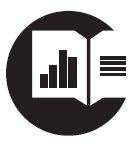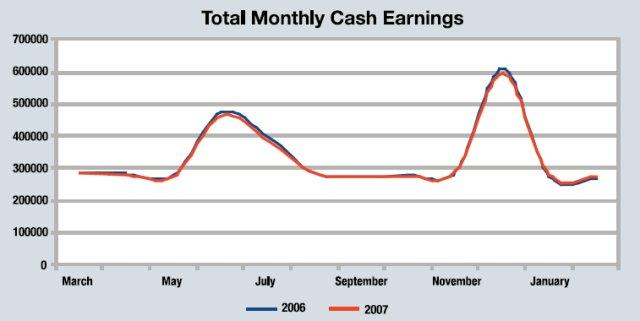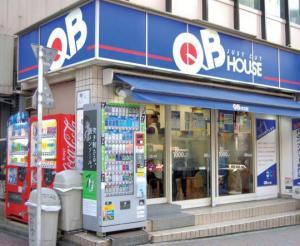Measure for Measure

J@pan Inc’s hard information on selected economic sectors and industries
Compiled by Ken Worsley of JapanEconomyNews.com
The Environment
- Estimated tons of greenhouse gases emitted by Japanese firms in fiscal 2006: 640 million
- Percentage of that total emitted by the steel industry: 32.6%
- Tons emitted by JFE Holdings, the largest single emitter: 60.29 million
- Amount Japan Wind Development is to spend on boosting capacity at its Futamata site: ¥22 billion
- Estimated annual cost to cut Japan’s greenhouse gas emissions by 11% by 2020: ¥4 trillion
- Amount of that cost estimated to be spent promoting nuclear energy: ¥4.7 trillion
- Number of homes projected to have some form of solar power by 2020: 3.2 million
- Factor by which that figure exceeds the current number: 10
- Amount Kyosemi plans to spend to build a solar cell panel factory in Hokkaido: ¥300 million
- Price per square meter of solar cell: ¥300,000
Labor and Wages

- Total value of Japan’s household assets as of December 31, 2007: ¥1.545 quadrillion
- Percentage decline from a year earlier: -0.6%
- Last year in which the value of household assets declined: 2002
- Average income at workers’ households in February 2008: ¥476,282
- Change from a year earlier: -0.1%
- Amount the average household spent on utilities in February 2008: ¥30,165
- Increase from February 2007: 9.7%
- Price increase for nonperishable food items in February 2008: +1.2%
- Price increase for instant noodles, spaghetti and mayonnaise: 17%, 13.2% and 10%
Household Budgets and Finance

- Average base monthly salary for full-time workers in 2007: ¥301,100
- Decline from 2006: 0.2%
- Average monthly salary for temporary and contract workers in 2007: ¥192,900
- Increase from 2006: 1%
- Change in average wage for male workers in 2007: -0.3%
- Change in average wage for female workers in 2007: +1.2%
- Hourly rate charged by staffing agencies for back-office workers: ¥2,200-2,500
- Number of workers employed in Japan in February 2008: 62.92 million
- Change from last year: -100,000
- Number of people listed as unemployed in February 2008: 2.66 million
- Change from last year: -40,000
Automotive
- Number of new cars, trucks and buses sold in Japan in February 2008: 322,613
- Change from a year earlier: +0.1%
- Maker showing the strongest growth: Subaru, +13.0%
- Number of new mini-cars sold in February 2008: 180,004
- Toyota’s projected production for 2008: 9.95 million units
- Change from a year earlier: -1.5%
- Honda motorcycle sales in India in 2007: 4,091,000 units
- Honda motorcycle sales in China in 2007: 1,162,000 units
- Projected cost of new Toyota plant in Miyagi Prefecture: ¥20-30 billion
- Estimated annual production capacity at the new plant: 200,000 units
- Projected cost of new Honda plant for mini-cars in Mie Prefecture: ¥50 billion
Sources: Bank of Japan, Cabinet Office, Nihon Keizai Shimbun, Japanese National Federation of Agricultural Cooperative Associations, Ministry of Health, Labor and Welfare, Ministry of Trade, Economy and Industry, Japan Wind Development, Ministry of Internal Affairs and Communications, Honda, Toyota, Nissan, Japan Automobile Dealers’ Association, Japan Mini Vehicles Association
Retail Focus:
QB House
By Sarah Noorbakhsh
A trip to the barbershop that was inundated with loads of extra services and carried a price tag to match was the original motivation for Kuniyoshi Konishi, founder of QB Net Co Ltd, to develop the wildly successful QB House. This no-frills bare-bones barber service offers a 10-minute haircut for ¥1000, with a brand image marked by its ubiquitous presence in shopping malls and train stations across the nation.
In an industry that, according to the Public Health Administration, has been slowly declining over the past several years, QB House has managed explosive growth, opening over 350 shops since it was founded in 1995. The booming of this quick cut business can be attributed to the gap it fills in a niche market of those who value their time and money over shoulder massages and hot towels. Additionally, the quick turnover in customers ensures a steady income, and the ¥1000 flat fee allows easy and quick calculation of profits.

QB House’s rapid growth is also due in part to efficiency borne through several unique innovations. A ticket vending machine instead of a cashier and traffic lights placed outside shops to indicate waiting time for a haircut are two hallmarks of the chain. To cut down on employee labor, and to bend a few rules, QB House’s ‘system units’ are equipped with all necessary appliances in arms reach, a dust box beneath each chair, and a special ‘air washer’ to blow away stray hairs after a cut instead of a more traditional shampoo. Sensors in the seats at each shop detect the flow of traffic at any given time, a feature part of the ‘traffic light system’ that enables the company to identify high-volume areas where another location could be opened.
The innovations go even further with the new ‘QB Shell,’ a one-person barbershop designed especially for QB House’s new locations in Singapore. Here video screens display news and information to customers during their 10-minute cut. As of 2007, the company has opened 23 shops abroad, with plans for further expansion into Asia. They have also forayed into a new market with the stylish ‘Quatre Beaute,’ offering working women beauty relief before going out on the town. Although not currently listed, in 1996 Orix Corp purchased 73.9% of QB Net Co Ltd, and the company has stated plans to make QB public after some finetuning with the current management to increase value.





